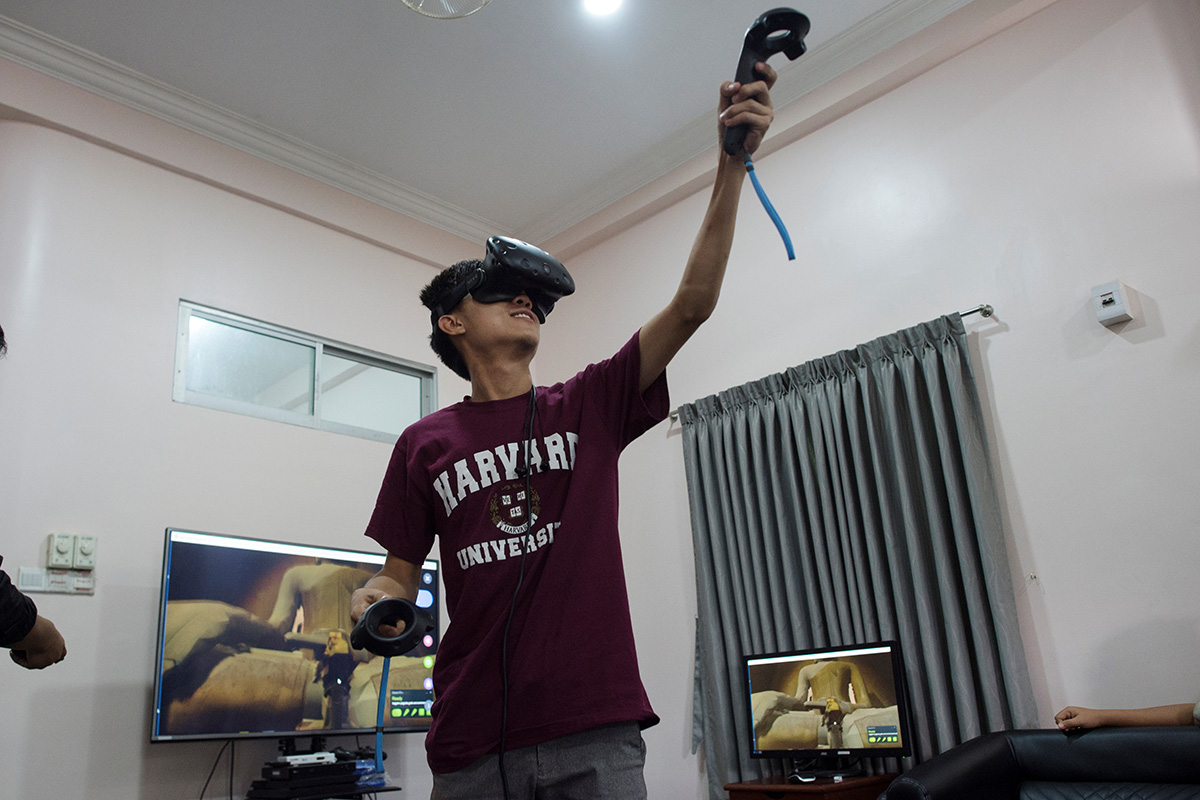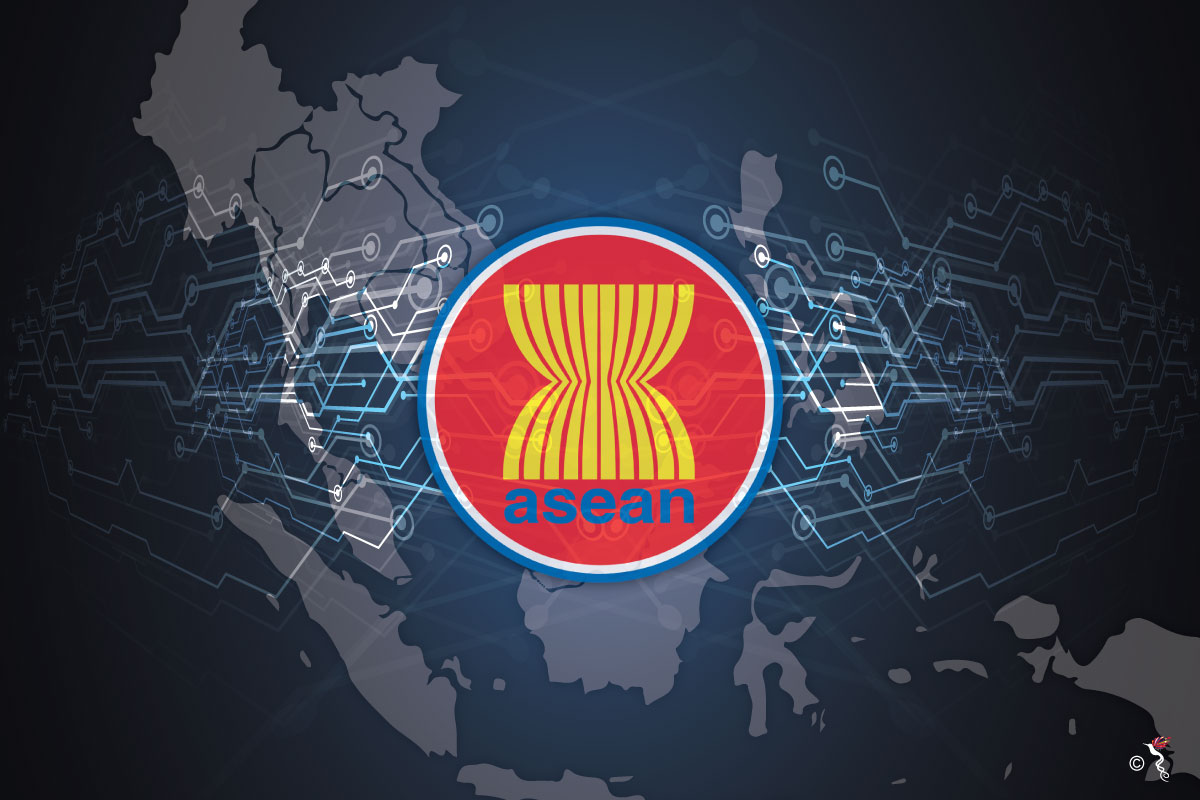Meet Chinh De. A fictional Vietnamese citizen of the near future, working for a global consulting firm with an ASEAN-wide focus.
Chinh wakes up at 8am, only a few steps away from his home office in downtown Jakarta. Equipped with a laptop, smartphone and virtual reality headset, he participates in a video-conference meeting with his team-members who are based in Yangon, Siem Reap and Vientiane. He is tasked with preparing and presenting a progress report for a client’s building under construction in Ipoh - a valley city in Malaysia. He puts on his virtual reality goggles, granting him access to a drone which examines the site from the air. Then, he generates a quick presentation on his laptop that is shared with his team via a cloud sharing platform.
At 2pm, Chinh whips out his phone and orders fried rice from his favourite local stall. Feeling particularly affectionate, he sends flowers to his girlfriend who resides in Manila, using an app linked to his Thai bank account that operates throughout the ASEAN region. Then, he catches up on a Massive Online Open Course (MOOC) in Data Analytics administered by a Singaporean university. At 7pm local time, he greets his Bruneian client via video-call, who is just starting his day on the opposite side of the globe in Montevideo and begins his presentation.
As soon as the video-call ends, he uses an e-hailing application and makes his way to the bar, eager to share the exploits of his day with his friends whom are making their way there.
The hypothetical situation above may not be far from reality for ASEAN in the coming future.

In this picture taken on August 11, 2017, a man wears a VR goggles as he watches some of the 360 4K video footage in Yangon, Myanmar (AFP Photo/Ye Aung Thu)
According to a 2015 report on "The ASEAN Digital Revolution" compiled by global consulting firm, AT Kearney, a digital revolution could transform the lives of approximately 648 million citizens in ASEAN by 2025. The same report predicts that in the decades to come, the manufacturing sector would most likely have embraced the technologies of Industry 4.0, a term used to characterise intelligent networking of product development and production.
As it stands, ASEAN’s digital economy generates 150 billion dollars in revenue annually and ICT investment is growing at a rate of 15 percent per annum. It is also estimated that ASEAN’s digital economy could add close to one trillion dollars to the overall GDP of the association over the course of a decade. By 2025, it is predicted that ASEAN citizens would be fully engaged with a digital economy, creating a thriving population of “digital natives” who are comfortable living in an online world. A recent report published this year by US based East-West Centre in collaboration with the US-ASEAN Business Council and ISEAS- Yusof Ishak Institute in Singapore highlighted that nearly 50 percent of ASEAN’s population is social media savvy and the current internet base could double from 260 million to 480 million by 2020. ASEAN also boasts 700 million active mobile phone subscribers made up of a largely young and middle-class user base.
On some level, ASEAN is on the right path to a bright digital future with the establishment of the ASEAN ICT Masterplan 2016-2020. Besides digitising the economy and helping traditional sectors embrace the digital trajectory, the focus of this plan is to develop the necessary human capacity to support an integrated, attractive investment market as well as to create a secure digital environment.

A woman uses a smartphone while walking past the Sule Pagoda stupa at Maha Bandula Park in Yangon, Myanmar, on June 15, 2017. (Bloomberg/Taylor Weidman)
Almost all ASEAN member states have some form of digital strategy although some like Singapore’s iN2015 (Intelligent Nation 2015), Digital Malaysia and the Philippine Digital Strategy are more advanced. The others, while having some form of a nascent digital strategy, are often hampered by poor infrastructure and weak implementation. The digital policies of Indonesia, Cambodia, Brunei, Thailand and Vietnam are still largely a work in progress with Indonesia focussing on connectivity and Brunei’s narrow focus on digital governance. Lao has no palpable digital strategy of its own. The main fraught in the path to a digital region as identified in the AT Kearney report are inhibitory mobile finance and e-commerce regulations, low consumer awareness on market digitisation, the lack of a singular regional digital market and a feeble local digital ecosystem.
ASEAN also lacks the liberalisation of data as indicated by a 2016 report on “The Digital Economy and Free Flow of Data” published by Deloitte, in partnership with the US-ASEAN Business Council. The key challenges for the region to address in facilitating freer flow of data throughout the region are regulations on data localisation, cyber security threats and data privacy. Data localisation refers to the practice of storing, processing and using data locally which inhibits cross-border data travel. According to the report, erecting such digital barriers would dampen the ability to synthesise data which would deprive local companies of information which could be useful to their development. This would cripple innovation, harm productivity besides also increasing the risk of cyber security attacks due of the creation of multiple entry points in global platforms.
Despite the pitfalls, there is tangible hope for ASEAN to hang on to. Singaporean Minister for Trade and Industry, Lim Hng Kiang at a speech delivered during the Singapore Business Federation’s ASEAN Conference in May remarked that the digital economy is a megatrend that his government looks to tap into during its chairmanship, in line with the goals of the ASEAN Economic Community 2025 (AEC). Currently, digital economy still lies in the fringes of the AEC and Singapore’s chairmanship could very well bring it centre stage.
The conversation on ASEAN’s digital economy is coloured by an ambitious regional plan against disproportionate implementation at a country-level. As far as frameworks go, the effort must be substantiated by palpable action. Given ASEAN’s propensity for non-interference, it becomes an arduous task to implement any agreed upon, non-binding regional level digital policy agenda. For ASEAN to take the leap into the digital future, it must work cohesively or risk losing out on an incredible opportunity.
